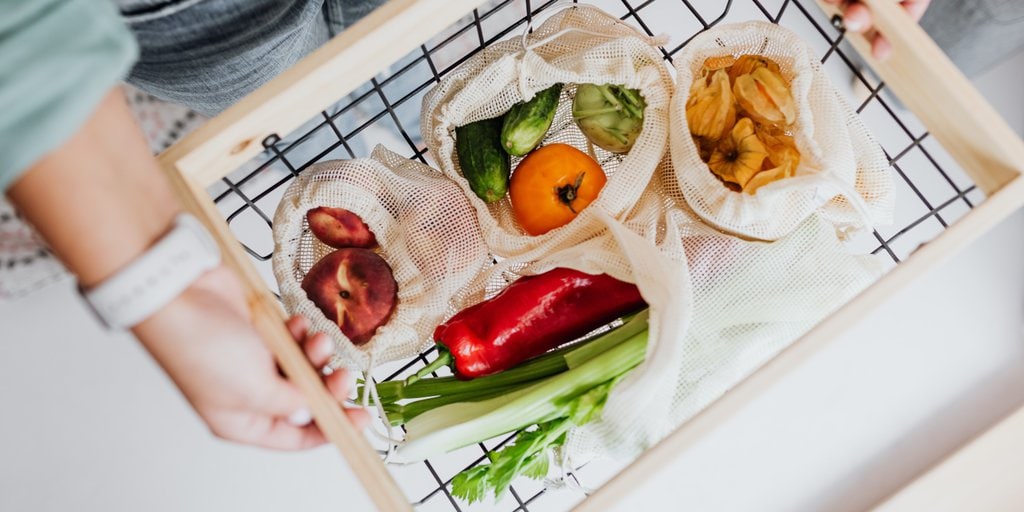When it comes to storing produce, it is important to know that certain fruits and vegetables are best kept separate from one another because otherwise, they could spoil faster. People often toss everything into one drawer, but this is not the optimal decision. Here is how to maximize the lifespan of fresh produce through separation.
Storing Fruits and Vegetables Responsibly

Some fruits and vegetables have specific temperature preferences, like cucumbers, which last longest when kept between 50 to 54 degrees F rather than the usual fridge temperature of 35 to 40 degrees F. Tomatoes prefer room temperature, and grapes like a slightly colder environment between 32 and 36 degrees F. Considering these temperature preferences can help people extend the life of their produce.
Beyond temperature considerations, some fruits and veggies should be stored separately to avoid transferring odors and flavors. Onions and garlic certainly have potent aromas that can overpower the smell and taste of other, more delicate, items like apples, pears, carrots, and celery, so it’s best to store them apart.
One key rule is to separate high-ethylene producers from ethylene-sensitive fruits and vegetables. Ethylene is a natural gas emitted by certain produce items that trigger the ripening process. For instance, under-ripe avocados remain hard until exposed to ethylene, which transforms them into a creamy, buttery consistency. However, when high-ethylene producers are stored too close to ethylene-sensitive items, the latter can ripen too quickly, leading to rapid deterioration.
Never Store Onions and Potatoes Together

To avoid this, experts recommend keeping ethylene producers at least six to eight inches away from sensitive fruits and vegetables. This step can extend the freshness and quality of produce, reducing spoilage and the number of items that go to waste. By keeping certain fruits and vegetables at a distance and being mindful of ethylene emissions, individuals can ensure their ingredients remain fresh and flavorful for longer, making the most of their produce investments.
Ethylene-Sensitive Fruits and Vegetables:
- Sweet Potatoes
- Grapes
- Cherries
- Kiwi
- Mangos
- Peppers
- Pears
- Avocados
- Lettuce
- Plums
- Melons
- Squash
- Lemons and Limes
- Apples
- Peaches
- Eggplant
- Nectarines
- Bananas
- Broccoli
- Onions
- Apricots
- Cauliflower
- Collard Greens
- Asparagus
- Cucumber
- Cabbage
Fruits and Vegetables That Are Not Ethylene-Sensitive:
- Cherries
- Grapefruit
- Blueberries
- Green Beans
- Oranges
- Garlic
- Pineapple
- Potatoes
- Strawberries
- Raspberries
- Tomatoes

There are also other ways to make produce last longer. These are practices like using the oldest fruits and vegetables first or washing each item only right before preparing it. One very important practice is to never store onions and potatoes together. Produce should also be kept dry to prevent bacterial growth and spoilage. Most produce also require circulating air to stay fresh longer, so using bags with holes or paper bags is better than airtight bags. Vegetables will also stay fresh if they are kept whole and not cut after purchase.
The bottom line is that fruits and vegetables should be stored separately depending on their smell, temperature, and ethylene gas production levels. According to experts, an easy way to remember which vegetables and fruits to store together is to just store like produce together. For example, brassica vegetables can be stored together, berries can be stored together, leafy greens can be together, and root vegetables, excluding potatoes, can also go together.